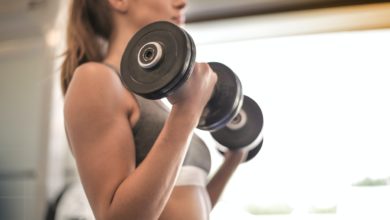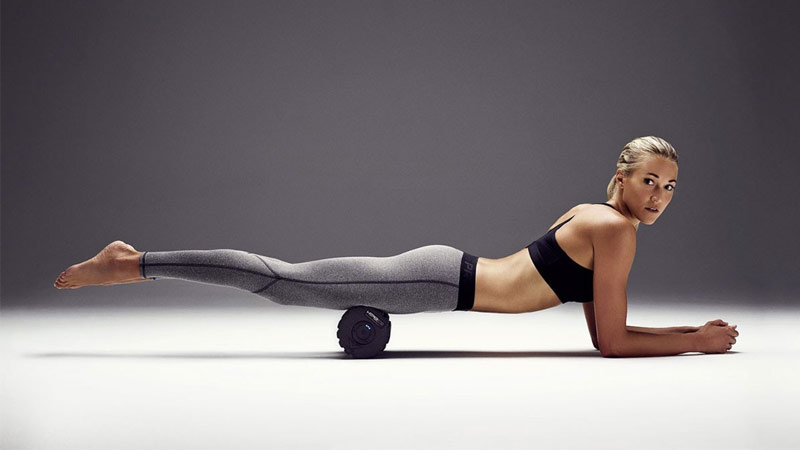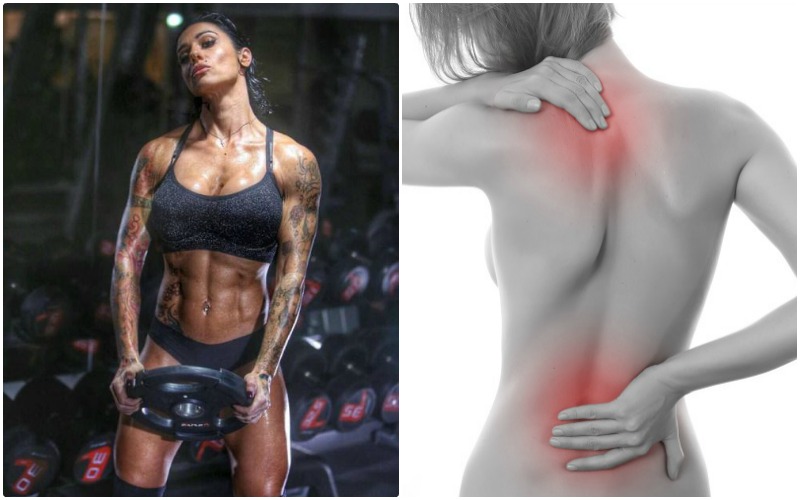
4 Ways To Improve Your Posture And Stop Pain
Is back, neck, and hip pain something you frequently deal with? Does it seem like you just can’t shake these aches and pains, no matter how much you stretch or exercise?
Maybe you blame it on a pinched nerve. Perhaps you think you’ve pulled a muscle and it isn’t getting better. But the truth probably has a much simpler explanation; your posture might just be all jacked up.

We don’t often think about our posture – even people who lead a very fitness oriented lifestyle tend to ignore this one very important aspect of health. The problem isn’t necessarily a person’s fault, though; if anything, it’s due to this hectic modern world.
Whether posture issues are due to a sedentary job, long daily commute in a vehicle, or even a bad mattress, many things can contribute to poor posture. And bad posture can cause a lot of problems.

Short term problems associated with poor posture:
- It changes the alignment of bones, muscles, and connective tissue.
- It reshapes your body so that it no longer runs at optimal efficiency.
- It can inhibit movement.
- It causes various muscles to tighten, creating chronic pain.
- It weakens muscles and joints.
Long term problems associated with poor posture:
- It can lead to the weakening of overall bone structure.
- Present issues with circulation and heart performance.
- Causes digestive problems due to misaligned organs.
- Creates breathing issues and or sleep apnea.
- Makes you more susceptible to getting arthritis.
- Eventually breakdown of the body may occur which can lead to a shortened lifespan.
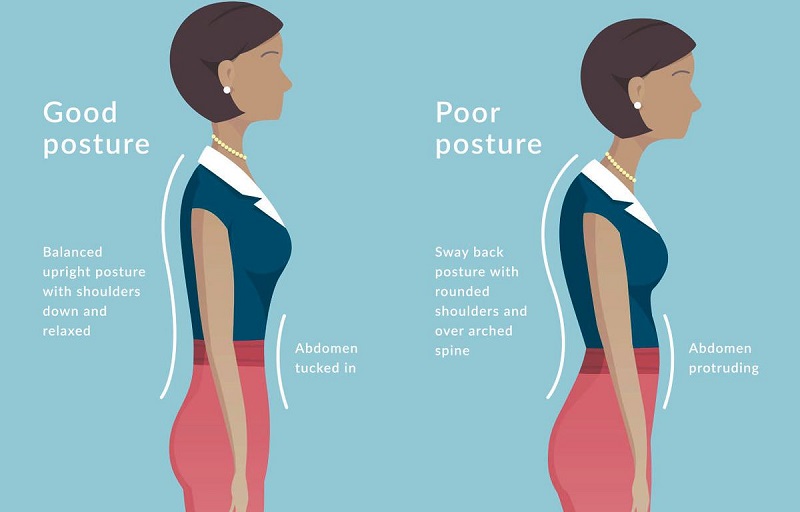
The main reason poor posture develops is from maintaining a specific position for extended periods of time. The human body is built to adapt to its surroundings. So this means if you spend a good portion of your day sitting at a desk, your joints and muscles will eventually shape themselves into a “posture” that’ll make being in that position more comfortable.
Unfortunately, this does little for when you’re not in that position—no longer seated and slouched. This is why office workers and people with desk jobs tend to have very bad posture.
It’s difficult for them to work in such a way where they won’t be put in a posture wrecking position for long stretches of time. But don’t worry, we have a few tips on how to help fix your posture and get rid of that nagging pain once and for all.

4. Tight Calves
When looking for possible causes of bad posture, you must first start from the bottom and work your way up. One common cause for poor posture as well as knee, hip, and back pain, are tight calves.
Having tight calves will change your gait; your muscles will work differently to compensate for the tightness of the calves, which causes a chain reaction all the way up the body—ultimately leading to bad posture.

Women struggle with having tight calves more often than men because they tend to wear uncomfortable shoes. Improperly fitting shoes can cause your calves to tighten as well as a host of other muscular imbalances.
This is especially true when it comes to wearing high heels. High heels can cause your calf muscles to shorten over time as you’re always walking as if you were on your toes. Look to wear flats more than high heels to avoid this.

An easy way to tell if you’re suffering from tight calves is to sit on a chair, lift your legs straight out in front of you, and pull your toes back towards your knees as far as they’ll go.
Your toes should be able to point 10-20 degrees beyond a right angle, but if you have tight calves you may find it difficult to even get them to reach a right angle.

There are numerous exercises you can do to help relieve and prevent calf tightness. A simple move is to roll your calf up and down on a foam roller, looking for any tender spots in your calf.
If you find one, keep the foam roller in that position until the pain subsides. You can also perform wall stretches and floor stretches to work both parts of the calf muscles.
The video below will show you some good stretches you can do at home to help your calves and feet.
3. Anterior Pelvic Tilt
Anterior pelvic tilt is when your hips naturally rotate forward when you are standing. It looks slightly awkward as it accentuates the curve in your lower back, which makes your butt and stomach stick out simultaneously.
This form of bad posture can cause a lot of lower back issues and those sharp nerve pains that shoot down either side of your legs.

This tilt is caused by developing shortened front hip flexors and weakened hip extensors in the back—usually from spending too much time sitting during the day. But it’s just not inactive people who get this; cyclists are also prone to this condition as they spend a lot of time seated during their training.
Figuring out if you have this problem is quite easy. Just stand with your back against a wall and look at the space between the wall and your lower back. It’s normal for there to be a small gap (enough for your hand to fit through), but if you have anterior pelvic tilt the gap will be much greater.
There are a few stretches we’ll go over that can help with this condition, but exercises that strengthen the glutes and hamstrings (such as hamstring curls, deadlifts, kickbacks, and hip thrusters) are necessary for correcting the issue.
The main stretches you should do are quad, hamstring, and hip flexor stretches. The video below will show you the best stretches to help with anterior pelvic tilt.
2. Rounded Shoulders
Moving our way further up the body, rounded shoulders are another very common form of bad posture many people have. While not as physically debilitating as anterior pelvic tilt, having rounded shoulders looks bad and can cause a few physical issues; the main one being weak chest and upper back muscles.
Like having tight hip flexors, rounded shoulders are often caused by working on a computer for long periods of time. The poor posture comes from being hunched over a keyboard all day.
Another likely cause of this affliction is from performing too many pressing exercises and not enough pulling exercises. Which just shows that exercising isn’t always enough to contribute to proper posture and can actually cause the opposite.

To test if you have rounded shoulders (assuming you can’t just tell by looking in a mirror or at pictures of yourself) is to hold a pencil in each hand.
Proceed to stand up straight and let your arms hang naturally to your sides. The pencils should be pointing directly forward if you have good posture, but they’ll be turned towards each other if you have rounded shoulders
As well as stretching, you should look to strengthen the upper back muscles through exercise. You’ll need to focus on movements that engage your mid to lower-trapezius, rhomboids, and rotator cuff muscles group.
Try doing exercises such as reverse flyes, external shoulder rotations on a cable machine, and seated rows. The video below will show you the stretches you should aim to do three-to-four days a week to fix your rounded shoulders.
1. Forward Head
Well, we are at the top of the bad posture list now. Forward head is exactly as it sounds; your head and neck naturally rest in a forward position rather than straight up on your shoulders.
This issue can cause neck and upper back strain, as well as breathing issues depending on the severity. It also puts you at more risk for injury when you lift things and engage in any athletic activity.
The causes for forward head are often the same as rounded shoulders (which often accompanies this problem). But the main cause not related to desk work is your cell phone.
People who constantly look at their phones or text throughout the day tend to develop this issue, which has been dubbed “text neck.”
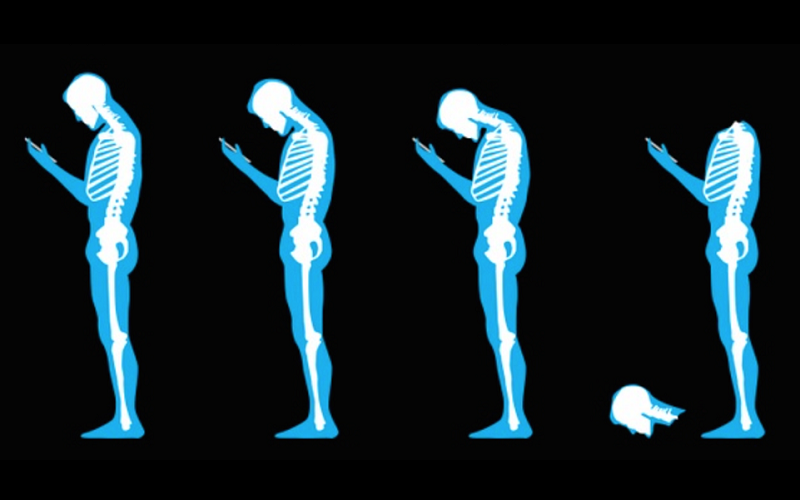
To tell if you have forward head, you just need to look in a mirror or at photos of yourself. From a side view, the middle shoulder should be in line with the middle of the ear. But honestly, you’ll be able to tell just by looking at your posture if you have this issue. Luckily this posture is easy to fix.
One of the simpler ways to correct forward head is to just raise your phone up higher when you look at it; no more looking down! As for exercises, the same ones you do to correct rounded shoulders will also help with this problem as well.
The video below will show you a few stretches you can do to help speed up the process of fixing your forward head.
Bad posture can wreck even an active person’s body over time. The best thing you can do is exercise and stretch regularly. Also, try to avoid sitting or being in specific positions for extended periods of time.
Have an office job? Try getting up and move around every 30-60 minutes. Don’t be afraid to start a stretching routine or even some light yoga – it will work wonders on your posture.
